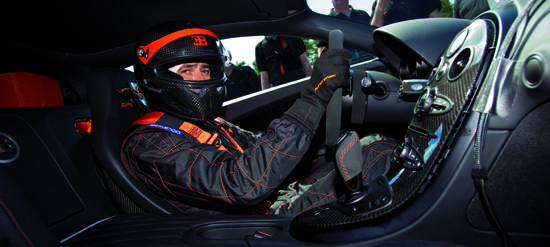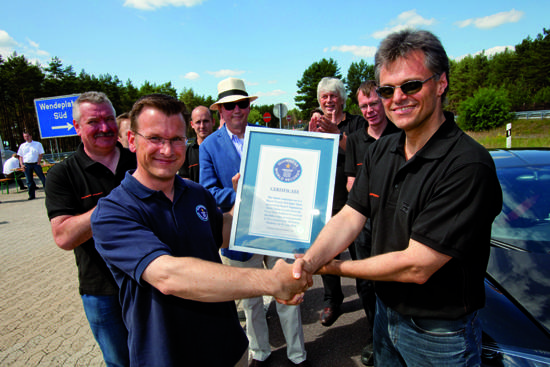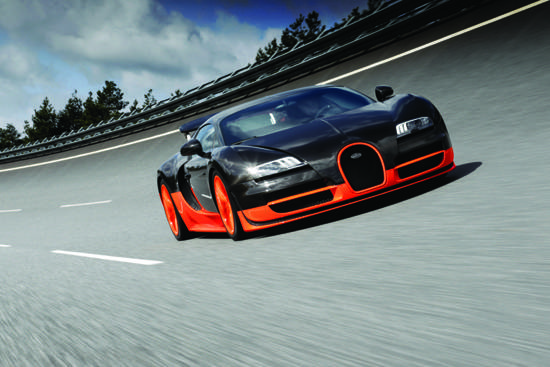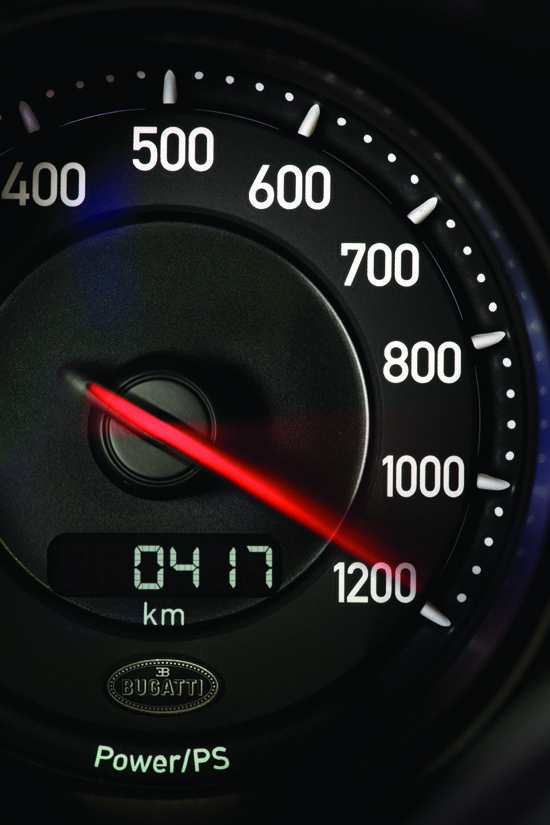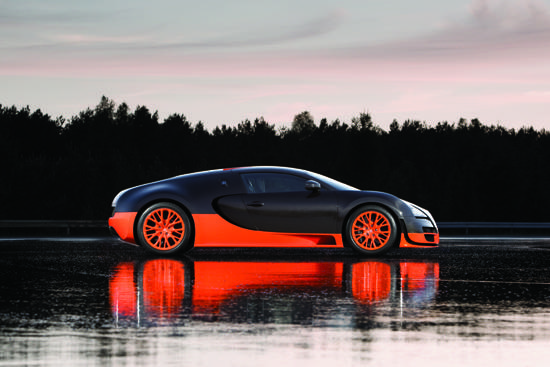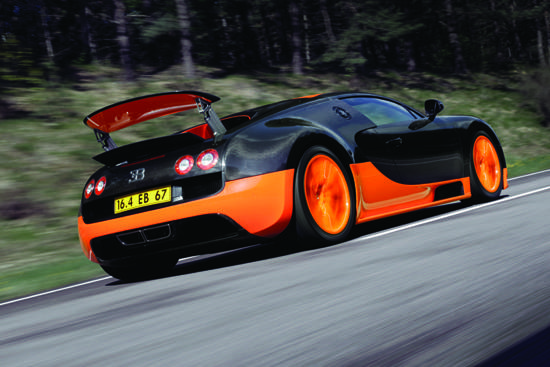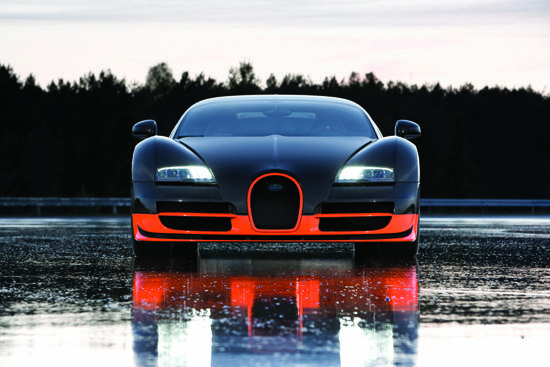When Bugatti S.A.S.’s inaugural 16-cylinder, quad-turbocharged Veyron appeared in 2005, enthusiasts were duly blown away by the car’s earth-shattering performance. Capable of 1,000 horsepower, traditionally somewhat of an automotive equivalent to the runner’s elusive 5-minute mile, the Veyron quickly set a world speed record for a production automobile. Three years later, an open-top version of the car arrived. Dubbed the Grand Sport, the newer car scored on style points and driver experience (when those huge air intakes whistle inches from your ears, the car’s power becomes a multi-sensory experience that can’t be recommended enough), but like all convertibles, suffered slightly on the performance end.
Like any foray in which only one victor can reign as king of the hill, it was just a matter of time before a hungry competitor dislodged the Veyron from its land speed supremacy. That car proved to be the low-volume Koenigsegg CCR, which, surprisingly enough, was eventually eclipsed by the SSC Ultimate Aero, a little-known niche supercar produced in the United States by a guy named Shelby who isn’t related to the legendary Carroll Shelby (and if that isn’t reason enough to adopt a pseudonym, I don’t know what is). Monitored by the Guinness Book of Records, the Aero bested the Koenigsegg in October 2007, posting an average speed of 257 mph. And so the Veyron continued to sink back down to the grounded locale of 3rd place…well, for a little while, at any rate.
We should have known that Molsheim’s finest and the R&D department of the VW Group would take some degree of umbrage to these upstart performances. Their opportunity to right the ship finally arrived on Saturday July 3, when Bugatti test driver Pierre Henri Raphanel took the wheel of the latest Veyron upgrade, the Super Sport. Now capable of 1,200 horsepower, the new Veyron averaged 268 mph in a test at VW’s Ehra-Lessien proving grounds, a world record that was officially recognized by a representative from the Guinness Book of Records.
The Super Sport’s achievement can largely be credited to technical upgrades that include larger turbochargers and intercoolers as well as a redesigned chassis. The car still employs VW’s lightning quick 7-speed dual clutch paddle-actuated transmission, one of the best in the business. New cosmetic yet functional exterior cues include the revision of the roofline, which now extends to partially cover the formerly exposed engine, and incorporates two NACA ducts that feed the engine’s air intakes. Unfortunately, consumer drivers will only get a glimpse of the Super Sport’s power ceiling, as the car is limited by a computer chip to a measly top speed of 258 mph (purportedly to protect the tires from melting). Needless to say, that number should be more than enough for most owners, and hopefully won’t be experienced anywhere other than a track.
Anticipated production figures for the Super Sport have yet to be announced, but given that Bugatti has to date sold 260 examples of the original Veyron, and 35 Grand Sports, it’s fair to assume that the Super Sport will not be manufactured in a quantity of more than 100 examples. As impressive as the performance numbers are, though, only so much figurative mileage can be gained by upgrading and re-badging what is essentially the same car again and again. Eventually, Bugatti will have to deliver an all new model, and though that doesn’t figure to happen anytime soon, the prospect does leave at least one member of the motoring press salivating with anticipation.







